Knowledge on groundwater – A prerequisite for water management in Khorezm Abstract

Authors:
Groundwater in Khorezm, Central Asia, is shallow fluctuating between 2.2 m below surface at the end of the non-irrigation period (February) and 1.15 m during the peak irrigation season (August). Shallow groundwater contributes moisture to meet crop water requirements (24 – 32 % of actual evapotranspira-tion), but enhances the process of salt accumulation also which in turn lowers the effectiveness of leaching. Analyzing 16 years of data stemming from around 2,000 groundwater observation wells in Khorezm revealed (I) a typical intra-annual pattern of the groundwater table, (II) a clear dependency of the groundwater table on the water directed to Khorezm (0.4 m difference of average groundwater level during the vegetation period comparing water ample and drought years) and (III) a trend towards a slower dropping of groundwater levels in autumn driven by the expansion of the winter wheat area. The average salt content of groundwater was moderate with around 1.75 g l-1. The knowledge on the spatial variability of groundwater salinity (between 1.3 and 15 g l-1) can be utilized to identify localizations promising for conjunctive options of surface and groundwater. Monitoring the groundwater table at a typical site in Khorezm with a high spatial and temporal resolution revealed that the groundwater table follows with a delay of several days the leaching and irrigation events. Furthermore, the impact of rice cultivation on the groundwater table in the vicinity of permanently flooded fields was quantified. Analyzing groundwater slopes evidenced a limited impact of drainage ditches (due to insufficient depth, blocking and outlet problems) and a de facto-drainage function of main irrigation canals. Based on simulations with the groundwater model FEFLOW the impact of improved irrigation efficiencies (and reduced losses recharging the groundwater) on the groundwater dynamics was analyzed in a Water Consumers Association.
Raising the overallirrigation efficiency from currently 33 % inthe WCAto 56 % would lower the groundwater level by 44 cm in average over the vegetation period. As a consequence, capillary rise would be reduced andcurrent irrigation schedules would need to be adapted to compensate for reduced groundwater contribution.Providingspatialandtemporalinformationonthegroundwateron a regular basis to land users and water managers has a high potential to contribute to overall irrigation water management.
